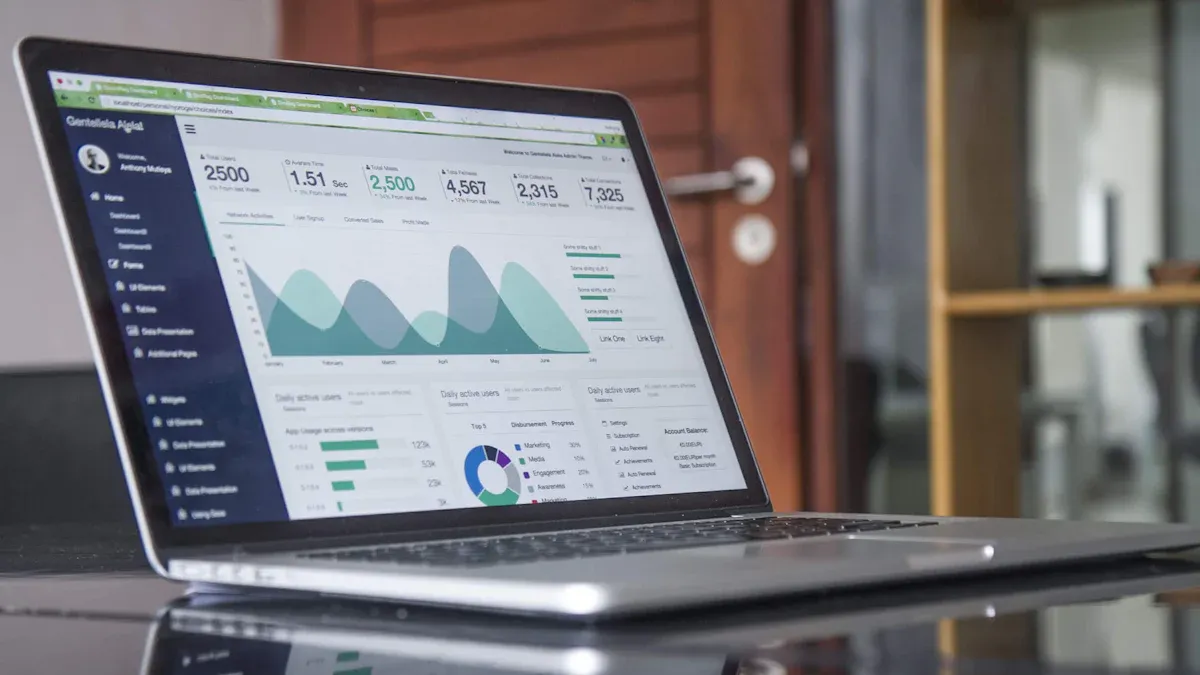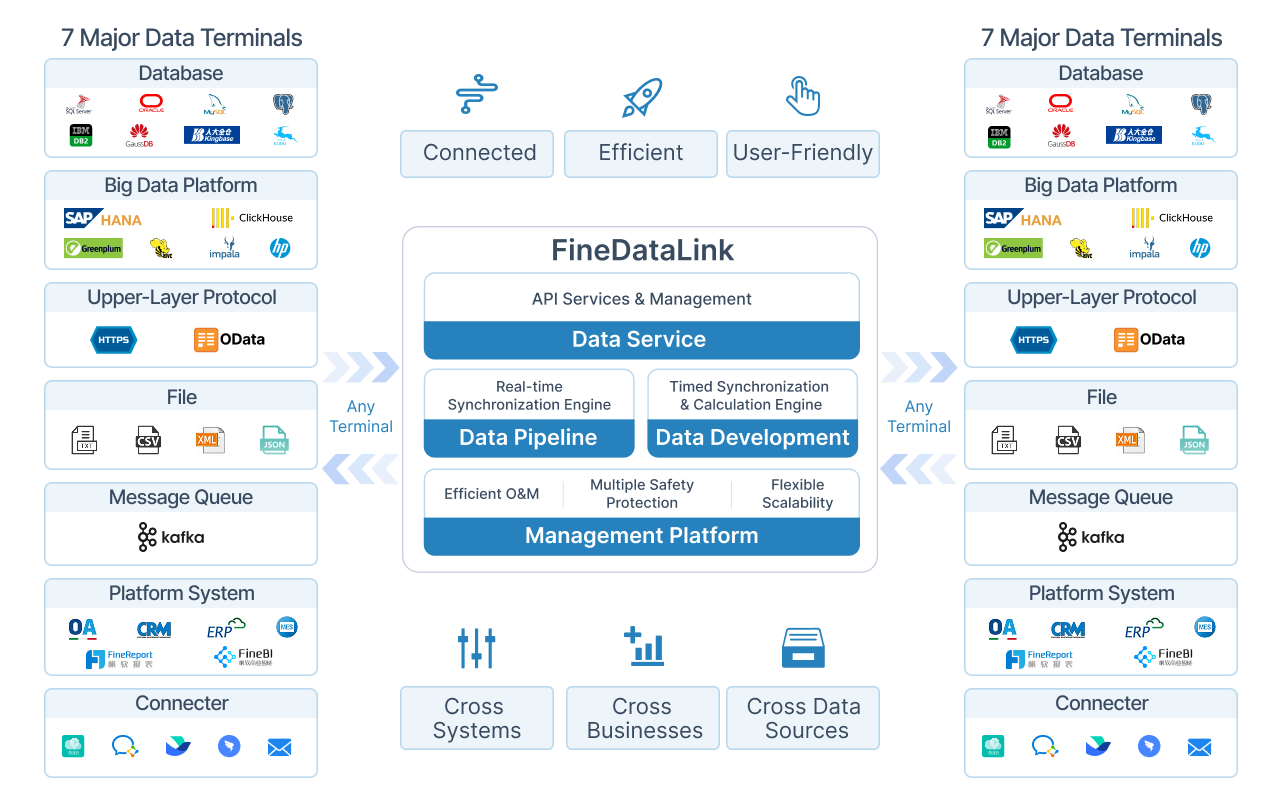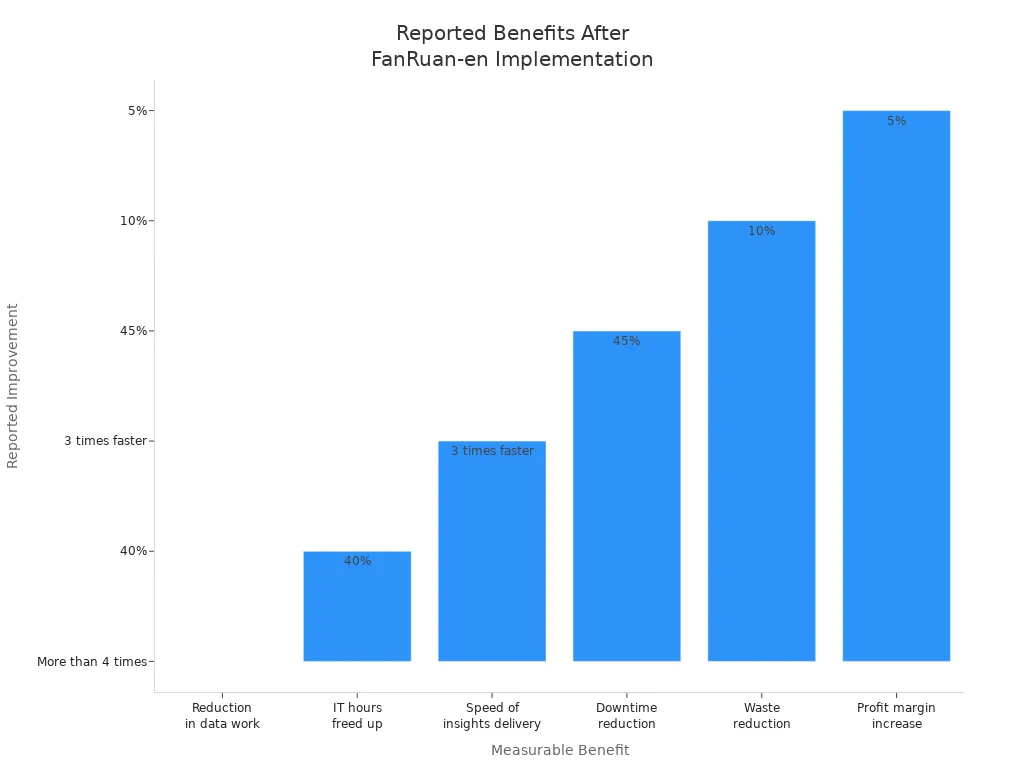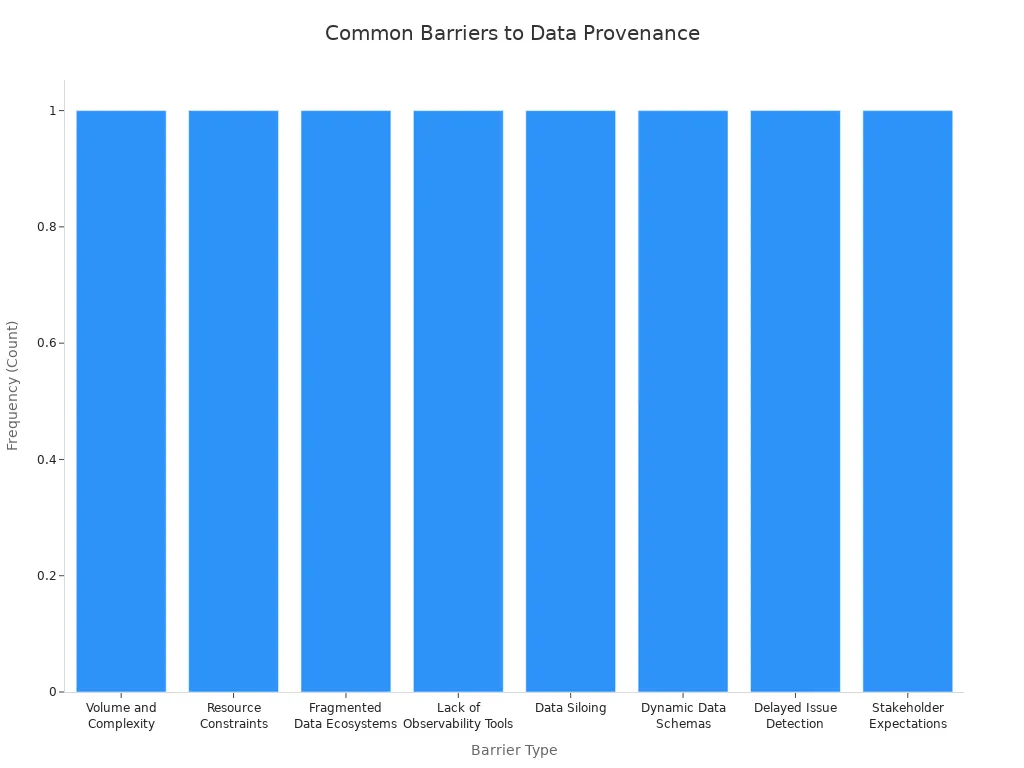

Data provenance tracks the origin, movement, and changes of data throughout its lifecycle. Organizations rely on provenance systems to validate the trustworthiness and accuracy of their data. The importance of data provenance becomes clear when considering compliance and risk management. Recent studies show that provenance helps regulated industries improve compliance by creating reliable audit trails. Data integrity remains a top priority, with 60% of organizations focusing on data quality to strengthen their management strategies. By ensuring clear data lineage, provenance supports confident business decisions and enhances the overall value of data.

Data provenance refers to the complete record of where data comes from, how it moves, and what changes it undergoes throughout its lifecycle. Organizations use provenance to track every step in the journey of their data. This process helps them understand the origins, ownership, and collection methods for each dataset. By keeping a detailed record, companies can ensure data authenticity and improve data quality. Provenance supports regulatory compliance and builds trust in business intelligence systems.
Many people use the terms data lineage and data provenance interchangeably, but they have important differences. Data lineage shows the end-to-end flow of data through systems, transformations, and processes. It answers questions like, "Which systems did the data come from?" and "What transformations has it undergone?" In contrast, provenance focuses on the detailed historical record of data origins, including who created the data, when it was collected, and what standards were used. The table below highlights these differences:
| Aspect | Data Provenance | Data Lineage |
|---|---|---|
| Focus | Detailed historical record of data origins, including source, ownership, and collection methods | End-to-end flow of data through systems, transformations, and processes |
| Purpose | Ensures data authenticity, integrity, and compliance with regulations | Helps understand data dependencies and impact analysis |
| Questions Answered | Who created the data and when? How was it collected? What standards were used? | Which processes or systems did the data come from? What transformations has it undergone? |
| Use Case Illustration | The 'prequel' to a movie: the backstory and formative events that made the dataset what it is | The 'sequel' to a movie: the continued journey and transformations of the dataset through systems |
Industry standards show that lineage provides a broad overview of data movement and downstream uses, while provenance offers a granular look at data origins and modifications.
Effective data provenance tracking relies on several core elements. These elements help organizations document and manage the entire data lifecycle:
Tip: A clear provenance strategy, supported by dedicated tools, helps organizations maintain compliance, assure data quality, and make informed decisions.

Organizations depend on the integrity of their data provenance systems to build trust and meet compliance requirements. When a company tracks every change and movement of its data, it can prove data authenticity and demonstrate responsible data handling. This process supports regulatory compliance in sectors like healthcare and finance, where strict rules govern data security and privacy. The following table highlights how data provenance strengthens trust and compliance:
| Aspect | Explanation |
|---|---|
| Authenticity & Integrity | Data provenance records origins, transformations, and modifications, ensuring data authenticity and integrity. |
| Transparency | Provides a clear history of data changes, enabling verification of accuracy and detection of errors. |
| Accountability | Attributes data changes to responsible agents, facilitating audits, debugging, and security investigations. |
| Regulatory Compliance | Helps meet legal and industry standards by safeguarding data accuracy and legitimacy. |
| Automated Tracking | Uses algorithms to reduce manual errors and enable real-time provenance metadata capture. |
By maintaining detailed data audit trails, organizations can quickly respond to audits and investigations. This transparency not only builds trust with customers but also helps avoid costly fines for non-compliance.
Integrity in data provenance directly improves data quality. When organizations track the full lifecycle of their data, they can identify errors, validate sources, and ensure accuracy. Studies show that training teams on provenance best practices leads to more reliable and reproducible results. Provenance models create a comprehensive record of data creation, modification, and use. This record supports validation, error detection, and compliance with regulations. In clinical data warehouses, for example, dashboards that visualize provenance help teams spot and fix frequent error patterns. As a result, organizations can maintain high data quality and make better decisions.
Note: Provenance and standardization reduce uncertainty and improve data quality by enabling validation and error detection.

A strong focus on integrity in data provenance reduces risk across the organization. Companies with comprehensive provenance systems report lower costs for compliance verification and fewer disputes over data usage. They also experience fewer delays in data partnership negotiations and higher completion rates for data sharing agreements. Provenance systems enforce contractual restrictions at runtime, preventing unauthorized data usage. Immutable audit trails and detailed lineage tracking help demonstrate compliance, reduce legal risks, and protect reputations. By supporting accountability and transparency, data provenance strengthens risk management in complex environments.
These outcomes show that integrity in data provenance is essential for effective risk management and long-term success.
A well-defined data provenance system includes several important parts that work together to ensure reliable data tracking and management. Each component plays a key role in capturing, protecting, and presenting information about data as it moves and changes.
Note: These components help organizations maintain transparency, trust, and accountability in their data operations.

Building a well-defined data provenance system requires careful planning and step-by-step actions. Organizations should follow these recommended steps:
Organizations often face challenges such as handling large data volumes, managing complex data sources, and ensuring privacy. They can address these issues by setting clear objectives, choosing the right tools, and providing training for staff.
FanRuan helps organizations build a robust well-defined data provenance system by offering advanced features focused on security, compliance, and scalability. The platform uses role-based access controls and compliance automation tools to protect data and maintain detailed audit trails. FanRuan’s solutions support strong data governance, automated reporting, and seamless data entry, which are essential for reliable provenance.
FineDataLink, a core product from FanRuan, strengthens data provenance through its real-time data integration, ETL/ELT, and API capabilities. FineDataLink can synchronize data across multiple sources with minimal delay, making it ideal for building both real-time and offline data warehouses. Its low-code interface allows users to set up data pipelines quickly, reducing manual work and errors. FineDataLink also supports over 100 data sources, enabling organizations to break down data silos and ensure complete data tracking.
The platform’s features—such as drag-and-drop operation, detailed documentation, and automated scheduling—make it easier for data engineers and governance teams to manage provenance. By providing strong security, flexible integration, and user-friendly tools, FineDataLink helps organizations achieve transparency, accountability, and trust in their data.

Business intelligence platforms rely on clear lineage and provenance to deliver accurate insights. When organizations use data lineage, they can trace information from its source through every transformation to its final use in reports or dashboards. This process helps teams identify errors quickly and ensures that business decisions rest on reliable information. For example, a retail company can follow customer purchase records from the point-of-sale system through analytics tools to marketing reports. This level of data tracking supports fast error correction and builds trust in the results. In finance, lineage helps verify calculations and supports regulatory compliance by showing exactly where each number comes from.
Many industries have solved major data management challenges by using provenance and lineage.
Industries also use structured metadata standards to meet regulatory needs. The table below shows how different metadata categories support compliance:
| Metadata Category | Example Fields | Regulatory/Compliance Relevance |
|---|---|---|
| Source | Dataset title, Unique metadata ID, Dataset issuer, Description | Establishes clear data origin and ownership, essential for compliance audits and transparency requirements. |
| Provenance | Data origin geography, Dataset issue date, Method, Data format | Tracks data lifecycle and creation methods, supporting sector-specific data handling rules and quality assurance. |
| Use | Consent documentation, Privacy enhancing technologies, Data storage geography, License to use, Intended data use | Documents legal permissions, consent, and privacy measures, directly addressing regulatory mandates like GDPR and CCPA. |
FanRuan and FineDataLink help organizations solve common data integration and provenance challenges. FineDataLink provides end-to-end visibility of data flow, allowing teams to trace data origins, transformations, and usage across complex systems. In scientific research, FineDataLink supports reproducibility by tracking data sources and changes. In supply chain management, it enables product tracking for transparency and risk management. In finance, it helps prevent fraud by ensuring traceability and accuracy in transactions. In healthcare, it improves data accuracy and supports regulatory compliance by tracking patient data from origin to use.

These improvements show how FineDataLink makes data tracking, lineage, and provenance practical and valuable in real-world scenarios.
Organizations that prioritize provenance gain stronger trust, transparency, and compliance. Recent research highlights several key benefits:

Industry experts recommend these steps for improvement:
FineDataLink provides practical tools for organizations seeking to strengthen their data management and prepare for future trends. Start free trial now.
FanRuan
https://www.fanruan.com/en/blogFanRuan provides powerful BI solutions across industries with FineReport for flexible reporting, FineBI for self-service analysis, and FineDataLink for data integration. Our all-in-one platform empowers organizations to transform raw data into actionable insights that drive business growth.
Data provenance helps organizations track the origin and changes of data. This process builds trust, improves data quality, and supports compliance with regulations.
FineDataLink synchronizes data across multiple sources in real time. The platform uses low-code tools and supports over 100 data sources, making integration fast and efficient.
Data provenance creates detailed audit trails. These records help organizations prove data authenticity and meet legal requirements in industries like healthcare and finance.
Yes. Data provenance allows teams to trace each step in the data journey. This visibility helps identify and correct errors quickly, ensuring accurate business intelligence.

